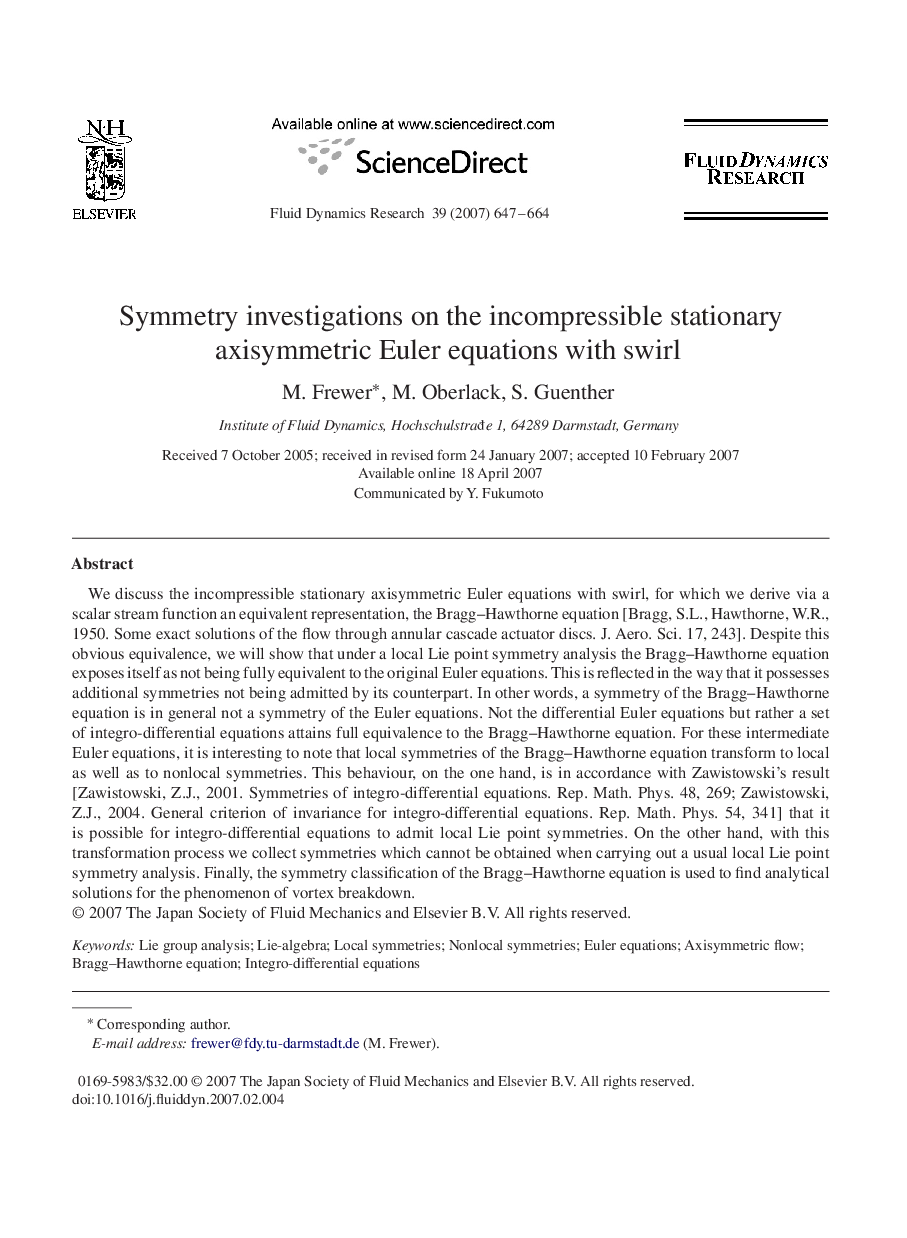| Article ID | Journal | Published Year | Pages | File Type |
|---|---|---|---|---|
| 775719 | Fluid Dynamics Research | 2007 | 18 Pages |
Abstract
We discuss the incompressible stationary axisymmetric Euler equations with swirl, for which we derive via a scalar stream function an equivalent representation, the Bragg-Hawthorne equation [Bragg, S.L., Hawthorne, W.R., 1950. Some exact solutions of the flow through annular cascade actuator discs. J. Aero. Sci. 17, 243]. Despite this obvious equivalence, we will show that under a local Lie point symmetry analysis the Bragg-Hawthorne equation exposes itself as not being fully equivalent to the original Euler equations. This is reflected in the way that it possesses additional symmetries not being admitted by its counterpart. In other words, a symmetry of the Bragg-Hawthorne equation is in general not a symmetry of the Euler equations. Not the differential Euler equations but rather a set of integro-differential equations attains full equivalence to the Bragg-Hawthorne equation. For these intermediate Euler equations, it is interesting to note that local symmetries of the Bragg-Hawthorne equation transform to local as well as to nonlocal symmetries. This behaviour, on the one hand, is in accordance with Zawistowski's result [Zawistowski, Z.J., 2001. Symmetries of integro-differential equations. Rep. Math. Phys. 48, 269; Zawistowski, Z.J., 2004. General criterion of invariance for integro-differential equations. Rep. Math. Phys. 54, 341] that it is possible for integro-differential equations to admit local Lie point symmetries. On the other hand, with this transformation process we collect symmetries which cannot be obtained when carrying out a usual local Lie point symmetry analysis. Finally, the symmetry classification of the Bragg-Hawthorne equation is used to find analytical solutions for the phenomenon of vortex breakdown.
Keywords
Related Topics
Physical Sciences and Engineering
Engineering
Mechanical Engineering
Authors
M. Frewer, M. Oberlack, S. Guenther,
